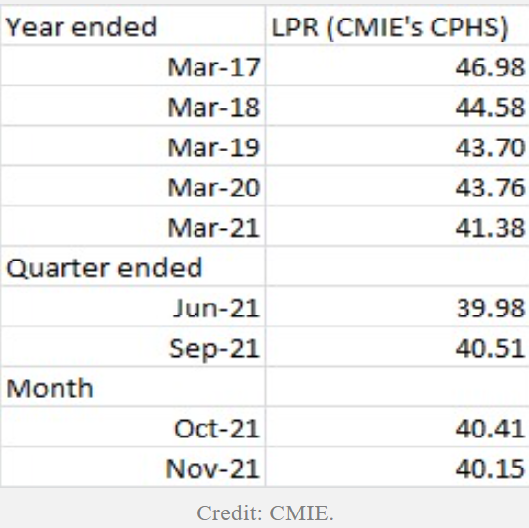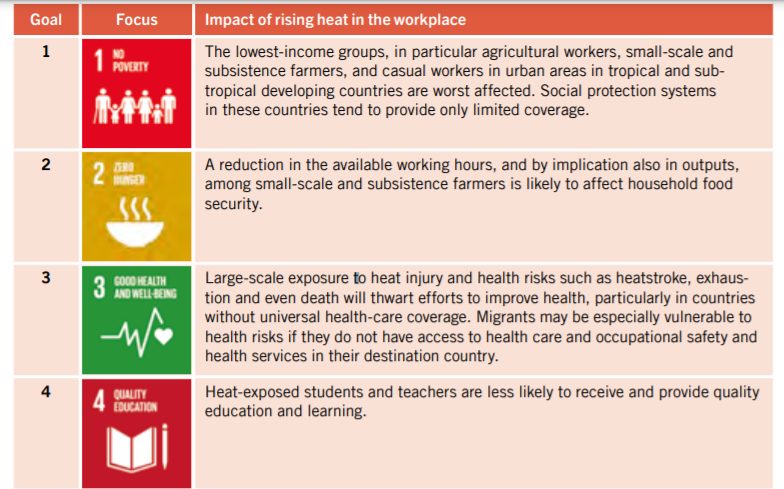Well, someone has rightly said how Climate change is not just about justice, it is something deeper, its about Human solidarity, on the whole.
With this greatest evil of all, the biggest threat in the entire world is to the values earned and cherished by human society.
Inequality, though found in abundance, is one of the consequences of Climate change.
Much of this divide was witnessed during the pandemic when a few people flourished aggressively with several crores in an hour, some registered profits like the proponents of e-commerce, telemedicine etc.
While there were also the kinds who could not afford shelter and had to travel barefooted in order to sustain themselves. A staggering 80 percent of informal sector workers like daily wage earners, small vendors etc., lost their livelihoods in a single strike.
This inequality leads to a degraded level of living standards, in perpetuity. It has been claimed that a greater proportion of these humble citizens, 58 per cent, had to borrow just in order to assuage their hunger.
While economies may suffer a setback with climate change, like India registered a 23.9 percent decline in the GDP for the first quarter of FY 2020-21, there may be others registering a boom due to tangible shifts caused by climate change.
India and its deep vulnerability to climate change:
While different regions may respond to Climate change and its impacts differently, India has been a focal point of all disastrous activities, based on every available projection.
Floods, droughts, cyclones, excessive rainfall, glacial bursts, landslide, dwindling food security etc., all depict a similar story. But there are other lesser surfed faces too.
According to a new study undertaken by researchers from Duke University, increased warming and humidity, in specific, may lead to grave losses in labour hours worldwide.
Unfortunately, India will fare as one of the worst-affected countries.
What can higher temperatures, so predicted in India’s future, do to a population?
The temperatures beyond 39°C can be lethal to a human body but even when we keep the morbidities and mortalities aside, such temperatures can cause many people to leave work, work with reduced efficiency or be unable to work at all.
This happens because the human body and its internal regulation mechanisms have acclimatized to certain temperatures for its normal functioning. In any other case, the body remains no longer
capable to perform.
With temperatures above 24–26°C, comes reduced labour productivity, 33–34°C causes a worker to moderately lose work intensity, close to 50 per cent of the intended work capacity.
Subsequent high degree exposure can cause heatstroke and can have a fatal outcome.
Just like different regions, there is disparity seen as some groups of workers may be more vulnerable than others.
As per International Labor Organization (ILO) more than 2 per cent of total working hours will vanish by 2030 worldwide, that too every year.
This will happen because the innate opportunity for the labour to work during cooler hours, will dramatically shrink.
The estimates suggest compounding losses (due to this loss in productivity) of $1.6 trillion (Rs 1.6 lakh crores) annually if the global temperature rise sees a 2 degrees Celsius rise.
In this case, as per the study, labour losses in the coolest half of those probable future days will be far more than the losses in the hottest half of today.
What is a heatwave?
India has a set criterion to ascertain a Heatwave. A maximum temperature of at least 40°C or more in Plains or at least 30°C or more for hilly regions is when the country declares it.
A report by The Lancet Countdown on Health and Climate Change describing the health impacts of climate change has estimated India’s recorded heat-related mortality incidents to be over 31,000 in 2018 alone.
IPCC reports and other Climate models have already expected heatwaves to become more frequent and lethal by the end of this century.
Geophysical Research letters study claims that with a 2-degree rise in global temperatures, the Indian population will be exposed to lethal temperatures which will be nearly thrice as of current temperatures.
However, it is to note that workplace heat exposure has first gained concern in the Fourth
Assessment Report 2007 of the Intergovernmental Panel on Climate Change (IPCC) and was re-asserted with a stronger focus in its Fifth Assessment Report (2014a and 2014b).
Battered in disguise: the current status of Labor in India
The entire country felt relieved to see the National economy coming back decently, kicking and alive. However, it remains puzzling how there is a fall in India’s employment rate by around 42%, at an all-time low.
ILO has stated this to be lowest amongst all comparable Asian economies (expected to be above 60 per cent), depending on labour participation ratio (LPR), a statistic that accounts for active job seekers within the employable population of a country.
The new related data suggests that 60% of the people who can work in India have fallen off from the job market.
While the countries like Indonesia, Vietnam, the Philippines etc. have more than 60% of their employable people actively looking for jobs.
They are simply not interested or not willing to look for work. Can something cause this deviation?
Will the economy continue to prosper with 60% of its employable people not seeking to work at all even though India has the majority of seasonal and daily wage workers?
The leaders could see much resentment when the independent economic data analyzing agency Centre for Monitoring Indian Economy (CMIE), calculated India’s LPR at 41.38% in March 2021.
It is worth noting that this statistic has further fallen to 40.15 % last month.
One of the biggest reasons for this incongruity in India is the low employment rate among women that even degraded further with a pandemic, especially in bigger states like Uttar Pradesh and Bihar.
If we are to believe the stats, a debilitating value of more than 90% of women is completely absolved out of the labour market.
CMIE has quoted it well enough: “If women had withdrawn from the labour force to study and upgrade their skills, why have they not returned to the labour market even after ten years?”
“This is the puzzle which policymakers are unable to crack.”
Countries to battle Global warming:
Several countries along the tropics in southwest Asia, South Asia as well as Africa have already been experiencing workday labour losses.
India, standing at 101 billion hours lost per year, is one of the countries where larger factions work outdoors, like Pakistan, China, Indonesia etc.
But other less populated countries could experience such higher per-capita losses.
These are 14 in number, consisting of Bangladesh, Bahrain, Brunei. Cambodia, Thailand, Gambia, Senegal, United Arab Emirates, Ghana, Togo, Qatar, Darussalam, Benin, Sri Lanka and Nauru.
Instead, the European sub-regions will face lesser consequences, and their productivity incurs a loss of less than 0.1 per cent in any case.
To a greater extent, even common occupations like agricultural or construction work, site engineering etc., might become almost impossible to be performed safely during peak noon hours in summer.
With global agriculture having accounted for 83 per cent of working hours lost due to heat stress alone in 1995, such loss can be about 60 per cent in 2030. Similarly, the construction suffered 6 per cent of working hours losses to increased heat in 1995, which may increase to 19 per cent by 2030.
Once the agricultural areas become lesser productive or unproductive, a large number
of workers will be displaced.
As per several studies, with increasing temperatures, even basic office or desk work will become
difficult as mental fatigue will sink in.
Although researchers have shaped the future loaded with labour losses for every country in case the global temperatures rise to 1°C, 2°C, 3°C and 4°C relatives to the current temperatures.
The International Labor Organization (ILO) has projected global productivity losses amounting to 80 million full-time jobs in 2030 in total due to the increase in heat stress caused due to global warming.
Can adaptation offer a way out?
This study has been the first in line, suggesting the efficacy of shifting heavy and outside work to the cooler segments of a day, merely as a technique in climate change adaptation.
One of the Scientists explains: “Our analysis shows that if we limit warming to within another degree of current levels, we can still avoid most worker productivity losses by moving heavy labour to the early morning hours”.
“But if warming exceeds 1°C, that becomes much more difficult. It’s a sliding curve, and gets exponentially worse as the temperature rises.”
While the study also depicts how approximately 30 per cent of these labour losses happening in the hottest hours of a workday can be recovered in current temperatures by a mere shift in lesser heat.
Researchers have chosen observation-dependent meteorological data as well as model climatic projections of temperature and humidity in order to measure humid-heat exposure, calculate the current labour losses and project the future losses.
When the current conditions cannot seem to offer some relief and hope to such miserable earners, one can imagine the difficulty they might have to endure in order to survive. Who can guarantee the protection, help of some kind or even a future?
Heat stress and above all, climate change, has been progressively becoming an impediment to a country’s economic activity. Now, it has dared to reduce the ability of businesses to continue to function during the hottest hours.
This is a concern that needs a solution as adaptation comes costly.
In times of stress and possible chaos, even a smaller vulnerability will be able to subsume a future. Without a decent upliftment or equitable access to resources, the world can surely offer and reflect optimism but no future of prosperity. The plan for survival remains in grave doubt.






